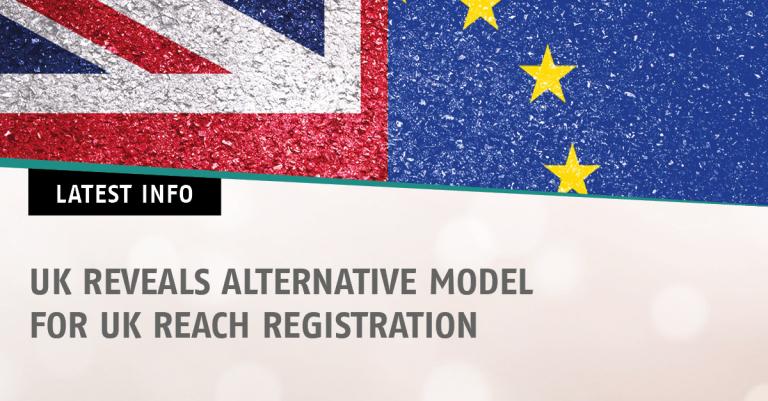UK Reveals Alternative Model For UK Reach Registration
On 9th November 2023, the UK’s Department for Environment, Food & Rural Affairs (Defra) published further details on its alternative transitional registration model (ATRm) for UK REACH.
The ATRm is intended to be used for substances which have already been registered according to EU REACH and now require to be registered under UK REACH. Defra had already postponed the registration deadlines for UK REACH by three years while it worked on ATRm such that the first deadline for the highest tonnage band is now in October 2026 (rather than 2023). In addition, registrations can be made via the New Registration of an Existing Substance (NRES) process with the appropriate registration fee being paid but a near empty registration dossier submitted. The expectation is that once there is clarity on the data requirements for UK REACH, NRES dossiers should be updated to either contain or refer to the relevant technical data.
Although the latest announcement is light on detail, the UK, at least under the current government, will continue with its own regulatory system (UK REACH) and will not seek to rejoin EU REACH nor adopt something closer to the Swiss model. Some of the key areas mentioned by Defra are:
- The ATRm should reduce the cost of accessing data which has already been submitted to ECHA (estimated at £2B) and also potentially avoid the need for new studies if the EU REACH data could not be accessed. UK REACH originally required submission of the same data at the same tonnage band in the same format as for EU REACH so it would be relatively simple for a registrant with access to an EU REACH dossier to adapt it for UK REACH. If the data requirements are substantially different then a completely different dossier will have to be prepared.
- ATRm will call for the provision of Great Britain (GB)-specific “use & exposure” information. This may include information on substances manufactured or imported at 1-10 tonne (Annex VII) reflecting the lower volumes imported into GB versus volumes made in or imported into the EEA. Some of the data needed to provide exposure information on lower volume substances is taken from studies normally only required at >10 tonnes. This needs clarification.
- Defra say that the required hazard information will be reduced to an “essential minimum” but what this means in practice is not defined. Previously they had used the expression “publicly available data” but registrants urgently need more clarity. This reduction in data requirements is potentially offset by the UK regulator (HSE) being able to “require and receive data from registrants quickly for regulatory or risk prioritisation purposes”. Again, it is unclear what “quickly” means in this case. The requirement to submit less hazard data is the main source of disquiet from many NGOs, who say that the UK regulator will not have all the data needed to make decisions.
- UK REACH registration fees are (more or less) equivalent in scale to the fees charged by ECHA for the same purpose; however, the UK REACH fees only give access to one country rather than 27. Defra have suggested that UK REACH fees will be reviewed, which one presumes means reduced. Defra have said that they will consult further in early 2024 but for now registrations under UK REACH for substances previously registered according to EU REACH can be done via the NRES system. However, with the first deadline now less than two years away, industry really needs clarity on the data requirements.
Defra have said that they will consult further in early 2024 but for now registrations under UK REACH for substances previously registered according to EU REACH can be done via the NRES system. However, with the first deadline now less than two years away, industry really needs clarity on the data requirements.

